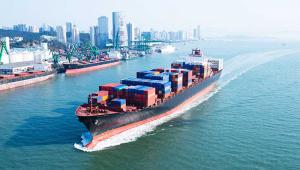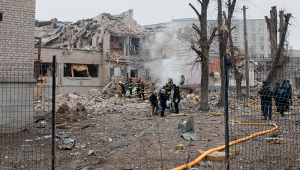nepal shutterstock.jpg

The aftermath of the April 2015 earthquake in Nepal.
In its latest check-up, the fund said it expects the Nepalese economy to grow by 5.5% in 2016/17, compared with 4.4% in the year prior. This was a slight upwards revision on its last forecast in November, which envisaged 5.4% growth this year.
This marks a return to normal growth for Nepal following the devastating earthquake in 2015 and an Indian trade embargo lasting five months, which combined to send the economy into a two-year long tailspin.
In 2014/15, the growth rate crashed to 3.4%, compared with 5.4% in the previous year, before recovering to 4.4% in 2015/16.
Geert Almekinders, who led the IMF mission to Nepal, said government spending and reforms, accommodative monetary policy and a good monsoon season had contributed to the rebound.
He added that the sudden withdrawal of high-denomination banknotes in neighbouring India was expected to have little widespread impact, with the main risk to the economy being significant delays in infrastructure projects that have blighted the country’s reconstruction efforts for the past few years.
Even before much of the country was destroyed after being rocked by a 7.8 magnitude earthquake in April 2015, Nepal had a substantial infrastructure gap. Since then the government’s capital spending has still remained remarkably low, despite the billions of dollars worth of reconstruction needed.
According to figures provided to the Kathmandu Post by the country’s Financial Comptroller General Office, the country had spent just 11% of its total capital budget for the 2016/17 fiscal year in its first six months.
Weather patterns, festivals and civil servant exams regularly cause much of the capital budget to be spent in the last quarter of the fiscal year. However, this can lead to rushed spending and sub-standard results.
Almekinders said the government is planning to increase spending for reconstruction and infrastructure – which he noted was welcome.
However, he said that in light of the government’s “still limited implementation capacity”, a “realistic budget” that prioritises projects with the biggest growth dividends will be “essential”.
Such a budget would include social spending aimed at boosting inclusive growth, he said, which was a topic that featured highly in IMF discussions with Nepal, and is crucial to the country’s ambitions to become a middle-income nation by 2030.
Maintaining the momentum of reforms in this area, as well as around policies and institutions, will be critical to achieving the growth outlook, the IMF stated.
“Strong policies are needed to enhance confidence amid ongoing political uncertainty,” explained Almekinders. “They are also needed to strengthen key institutions and administrative capacity which are critical for overcoming the chronic under-implementation of the budget and boosting private investment and growth.
“In the absence of strong policies, growth would likely revert to the average of the past decade and fall short of substantially improving living standards and social indicators.”
Nevertheless, the IMF remains relatively optimistic. In contrast, the World Bank predicts that growth in Nepal will recover to 5% while the Asian Development Bank puts it at just 4.8% for this year. All forecasts are well below the government’s estimate of 6.5%.













